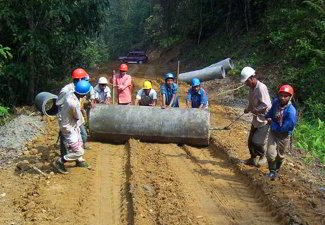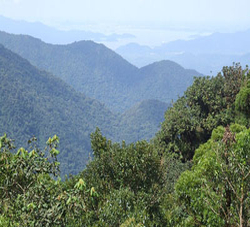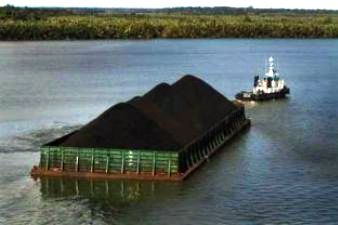
- According to a new Centre for Science and Environment (CSE) analysis, the rate of forestland diverted has gone up significantly since January 2013; a whopping rise of 42 per cent when compared to 2012.
- Only 3.5 per cent projects are rejected; half the rejection rate of forest clearance projects since 1981.
- Ministry is granting clearances even to projects that have earlier been denied clearance or were at abeyance – by diluting clauses.
New Delhi – A new analysis by Centre for Science and Environment (CSE) says the Union Ministry of Environment and Forests (MoEF) is approving projects at an unprecedented speed – and even clearing some which had been denied clearance earlier.
Latest information available as per MoEF’s own records indicates that the area of forestland diverted every month has gone up significantly. Since January 2013, MoEF has cleared 12,571 hectare (ha) of forestland, an average monthly figure of 3,143 ha. In 2012, MoEF had cleared 26,595 ha of forestland with a lower average monthly figure of 2,216 ha. Thus, the area of forest diverted has registered a 42 per cent increase.
Says Chandra Bhushan, CSE Deputy Director General, “Our analysis shows that not only the area of forest being diverted for projects is being done at a faster pace but also the rejection rate has gone down significantly.” While the rejection rate is 3.5 per cent for 2013, it was about 6 per cent for all forest clearances granted since 1981 after the Forest (Conservation) Act 1980 came into force.
Of all forest area diverted this year, 42 per cent was for mining, 22 per cent for irrigation projects, 10.5 per cent for roads, 8 per cent for drinking water schemes, 6.5 per cent for hydro power projects and the rest for defence, transmission lines, pipelines, wind power, railways, etc. Of the 88 projects considered by the Forest Advisory Committee (FAC) from January-April 2013, 25 per cent have been kept as pending mainly for want of more information from the project proponent.
Refused and Then Cleared
A desperate rush on the part of the Ministry to grant clearances is not just evident through the granting of clearances to fresh proposals, but also where projects that had earlier been denied a clearance or were held in abeyance are being cleared by diluting clauses. While granting these clearances, the CSE team finds the MoEF has overlooked gross violations of the provisions of the Forest Conservation Act; these violations had been duly noted by the FAC.
In Hasdeo-Arand Coalfield in Gujarat, 1,988 ha of forest land has recently been cleared for diversion in favour of Gujarat Mineral Development Corporation Limited; the proposal had been rejected by the Committee in June 2010 on grounds of it being in a no-go area.
In another controversial decision, the Committee approved the diversion of about 1,000 ha of forest land in Raigad Forest Division of Maharashtra. The decision involves a drinking water supply project on the Kalu river proposed by the Konkan Irrigation Development Corporation. The project was rejected during a FAC meeting held in April 2012, on various grounds including initiation of construction work on forestland in violation of the Forest Conservation Act, location of project within seven kilometres from a wildlife sanctuary and ecologically sensitive areas of the Western Ghats, etc.
The Tawang Hydropower Project Stage II involving 117 ha of forest land that received a nod from the FAC during its meeting in January 2013 is another example. The project, when earlier considered during FAC meetings held in April and September 2012, was set aside for later consideration as the Committee required that a comprehensive study to assess the cumulative impact of the projects planned in the Tawang basin should be conducted before the projects could be granted clearance. However, during its January meeting, the Committee noted that demand was mounting at various levels on part of the Central and State Government for clearance of the project.
Such decisions of foregoing the consideration of cumulative impact of projects in the face of pressure from Central and State authorities is becoming more of a trend, rather than being cases in isolation, points out Chandra Bhushan.
Not only ecology, wildlife also has taken a backseat at instances of granting clearances to forestland. For example, during the FAC meeting in December 2012, clearance was granted for 778 ha of forestland to Rohne Coal Company for mining in Hazaribagh, Jharkhand. A report on the area by the subcommittee of FAC in September 2012 noted that the western part of the mining area, located between Hazaribagh Sanctuary and Palamau Tiger Reserve, is a significant wildlife corridor especially for elephants. Following such observation by the subcommittee, FAC at that time said that the project will be considered further only after submission of a Wildlife Management Plan for the area by the state government. But in December, when the project was undertaken for consideration of clearance, no Wildlife Management Plan had been prepared or produced by the state.
“MoEF seems to be under dual pressure at the moment regarding granting clearances: pressure from the Cabinet Committee on Investment (CCI), and also from the industry,” says Bhushan. Since being established in December 2012, CCI has been instrumental in putting a lot of pressure on MoEF for giving clearance to big ticket/large development projects, such as coal mining projects, oil and gas exploration projects, infrastructure projects, etc. “This trend is also clear from the statistics. About 50 per cent of forestland has been cleared in last four months for mining and power generation and transmission,” he adds.
For more information, visit CSE’s Green Clearance Watch:
http://www.greenclearancewatch.org/
Source: CSE.



















